This post may contain affiliate links. Please read my privacy policy.
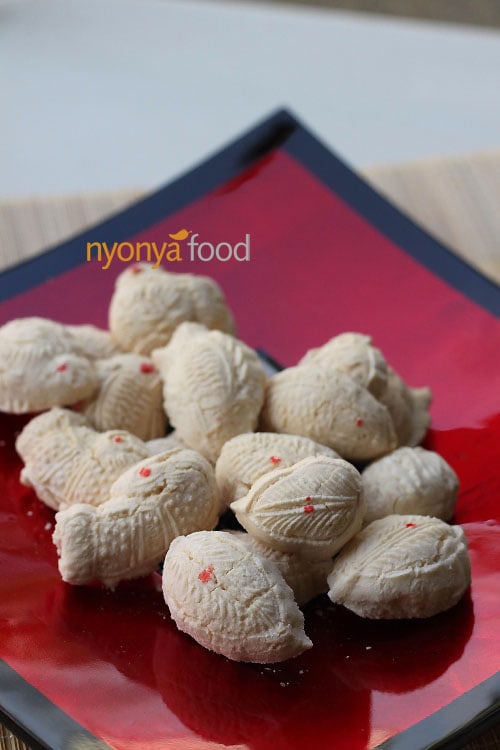

Table of Contents
FREE EMAIL BONUS:
5 Secrets to 20 Minute Dinners!
Tips, tricks, and recipes for dinner in a hurry!
My contributor Siew Loon is baking up a storm for Chinese New Year and today she is sharing a traditional Chinese New Year cookie recipe: kuih bangkit.
I remember many childhood days when I helped my family making this goodies. For other Chinese New Year recipes, don’t forget to check out my posts at Rasa Malaysia: soy sauce chicken, ginger and scallion fish, crab noodles, and more.
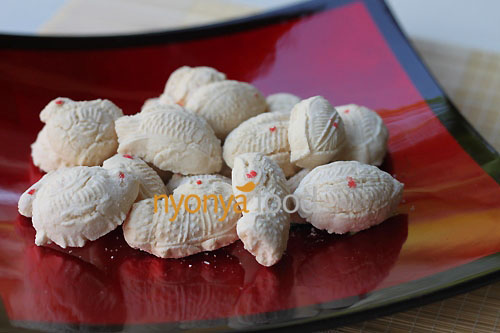
Contributor: Ho Siew Loon
I am back again with my new year goodies. I have always enjoyed making the new year goodies as this is the time all family members will get together and help. This time around it is the traditional nyonya Kuih Bangkit.
This little figurine goodies has lost its popularity among the younger generation and has been taken over by western cookies such as chocolate chips cookies, butter cookies, etc.
I remember that Kuih Bangkit is a must for Chinese New Year and every house that you visit, you will sure to find it…(get kuih bangkit rcipe after the jump)
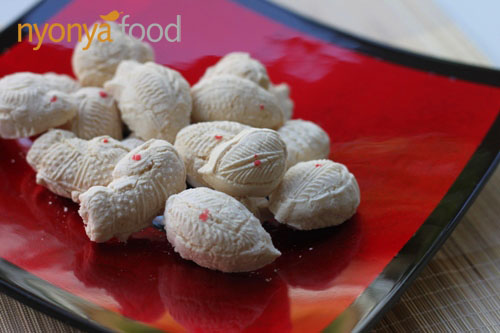
Kuih Bangkit is a traditional Chinese New Year cookies and it is made mainly from tapioca flour, eggs and coconut milk.
It is a cookie that is hard on the outside but melts in your mouth. This is one cookie that has quite a long shelf life compared to other cookies like Pineapple Tarts. It can be kept for about 2 months if stored in airtight container.
How Many Calories per Serving?
This recipe is only 590 calories per serving.
What to Serve with This Recipe?
There are many types of kuih in Malaysia. If you wish to try making kuih at home, I recommend the following recipes.
Kuih Bangkit
Ingredients
- 150 g (5 oz) corn flour
- 600 g (1¼ lb) arrowroot flour
- 1-2 pandan leaves (cut into 3 cm lengths)
- 3 egg yolks
- 150 g (5 oz) castor sugar
- 250 ml thick coconut milk
Instructions
- Fry the corn flour, arrow root flour and pandan leaves in a dry wok over a low heat until the flour is light, about 30 minutes. Leave to cool overnight.
- Whisk the egg yolks and sugar until very thick and stir in 250 ml (8 oz.) of the coconut milk gradually (you may not need to use all the milk if the texture is too runny). Then knead in enough flour to form a pliable dough, about 5 minutes.
- Lightly dust a wooden Kuih Bangkit mould with the remaining flour, Press a small piece of dough into each of the designs of the mould, trim off excess dough with a butter knife and knock the mould gently against the worktop to dislodge the cookies.
- Arrange the cookies on a lightly floured baking trays. Bake at 150°C (350°F) for 10-20 minutes, remove cookies after 15 minutes.
Notes
Nutrition
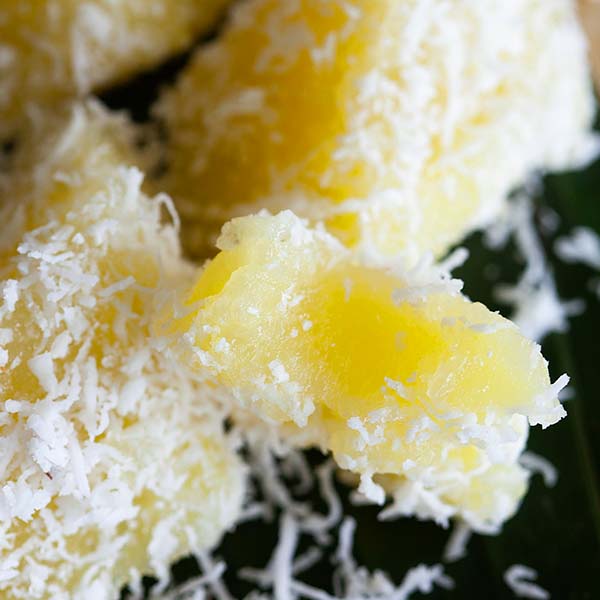
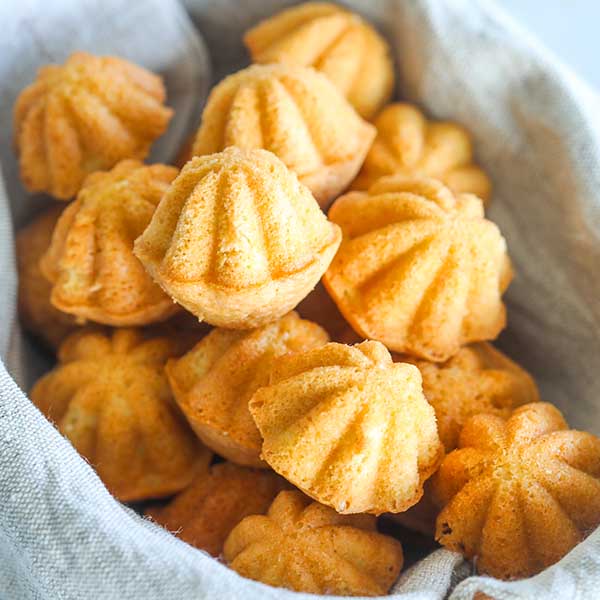
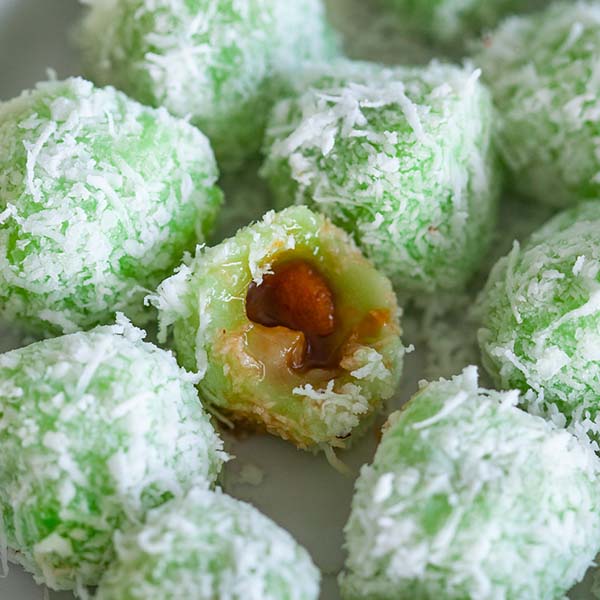
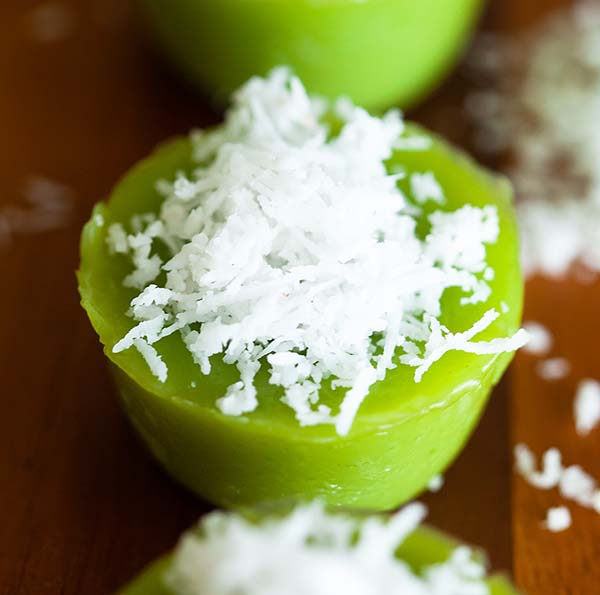
Where do I buy the kueh bangkit mould from? Its difficult to get pandan leaves in Canada too. The moulds are beautiful.
Malaysia.
What is arrowroot flour ?
Arrowroot flour. You can buy at the store!
Hi, any other flour can replace arrowroot flour ?
Please follow the instructions.
I see each cookie has a red dot on the center. It is not mentioned in the recipe.
What does the red dot symbolize, and what is it made with?
The red dot is for decoration, it’s optional. It’s just a symbol for Chinese New Year.